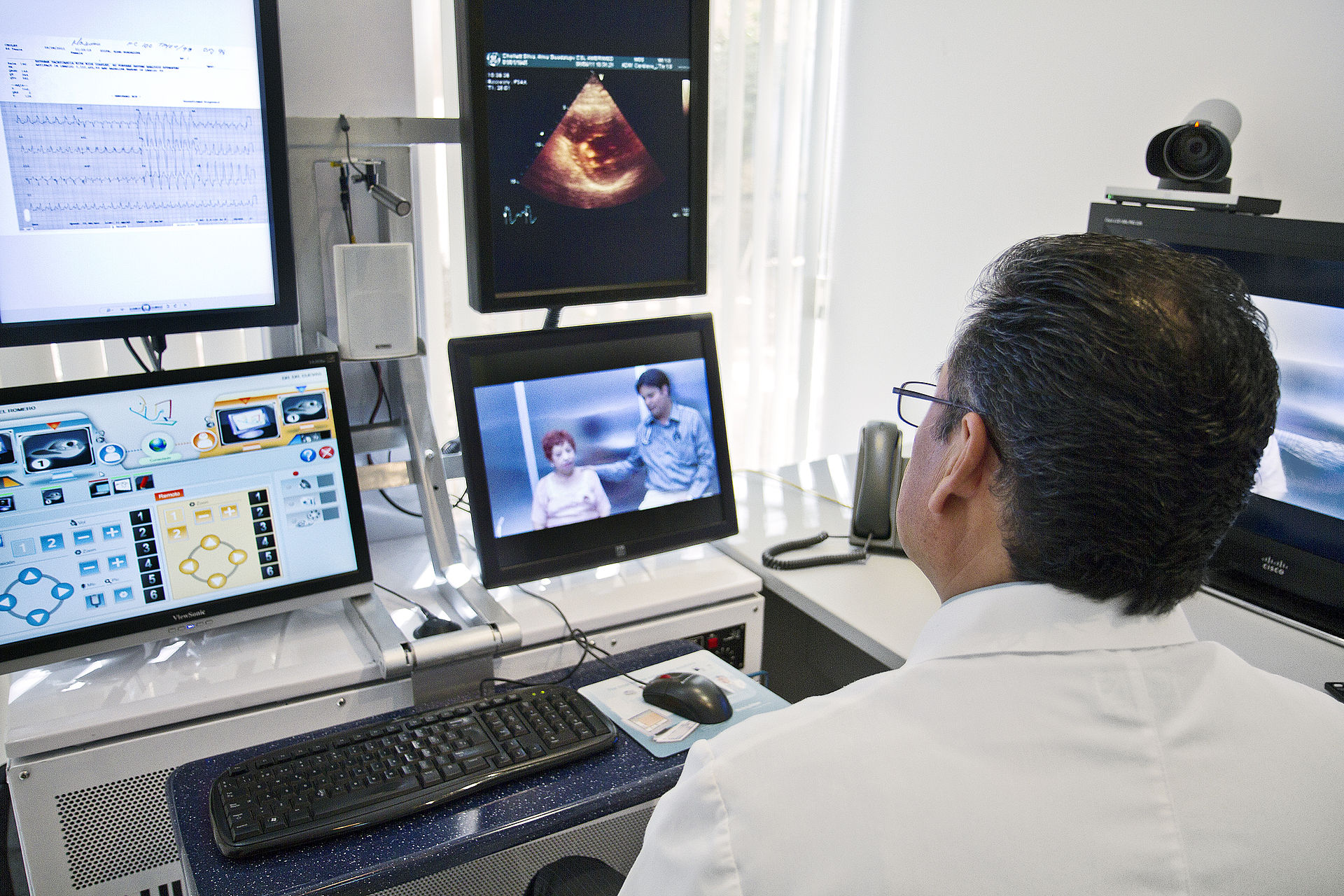
Dr. Juan Manuel Romero, a cardiologist at a hospital in Ciudad Obregon in Sonora, Mexico, performs a pre-op consultation with Alma Guadalupe Xoletxilva and her doctor, Edgar Cuevas, who are 400 miles away in La Paz, Baja California
“I had sex last night and now my penis hurts. What’s going on?”
“What’s this funky growth on my skin?”
“Could you explain more about the process of this procedure?”
“My pee is pink. Should I be worried?”
Asking doctors questions can sometimes be uncomfortable, doubly compounded by the fact that you might have to drive quite a long way to be seen by a specialist. But a new medium for medicine is making it easier for patients to see their doctors, increasing medical access and ease for everyone—telemedicine.
Telemedicine is essentially remote health care. Medical information is exchanged electronically or via telephone, which enables medical professionals to improve a patient’s clinical health from a distance. Medical information and insights can be shared via video or new wireless programs, so information and problems can be reviewed quickly.
The benefits of telemedicine are real: patients experience shorter wait times, lower medical costs, more opportunities to schedule an appointment, and fewer errors in their medical care. Telemedicine is especially important for urology and sexual health patients, as a scarcity of urologists can make it hard to get in to see one.
Many doctors spend a lot of time driving back and forth to different hospitals and clinics, which costs them valuable time they could be spending with patients. But with telemedicine, much of that travel time is eliminated, for both patients and doctors.
Telemedicine is especially crucial for those living in rural areas, far from specialty offices or even large hospitals. Through electronic communications, patients can consult their doctors from the comfort of their own homes. Information can be collected remotely and sent off to diagnostic testing facilities, easing nurses’ schedules because they will have to make fewer house calls to collect samples.
For urologists, telemedicine offers the tools needed to help as many people as possible. Doctors can offer urology coverage for several different hospitals at a time because they aren’t commuting back and forth between them. Modern-day telecommunications also make it easier to schedule surgeries and perform initial bedside meetings on the day of surgery. Doctors can even monitor patients’ post-operation progress remotely! Bob can rest comfortably at home after surgery, knowing he’s in good shape! Rest up, Bob.
Telemedicine offers a lot of solutions to some of the big problems facing traditional medical care, like cost and wait times. Streamlined, tailored medical care has the power to make life a lot better for many patients and doctors, and it may be coming to a state near you! Two hundred bills on telemedicine have been introduced in the United States since 2015, and 12 states have passed a compact on telemedicine. Another 14 states have bills pending.
So if you’re waiting to see a specialist, especially a rarer one like a urologist, telecommunications with your doctor may be a wonderful tool. Check with your physician’s office to find out if they can accommodate you—you may not even have to leave the house to ask that embarrassing question!
Through telemedicine, more communities will have access to the care they need—and that’s what being a doctor is all about.
If you’d like to learn more about my services or telemedicine, visit American Telemed or feel free to contact me by phone or through my website.
